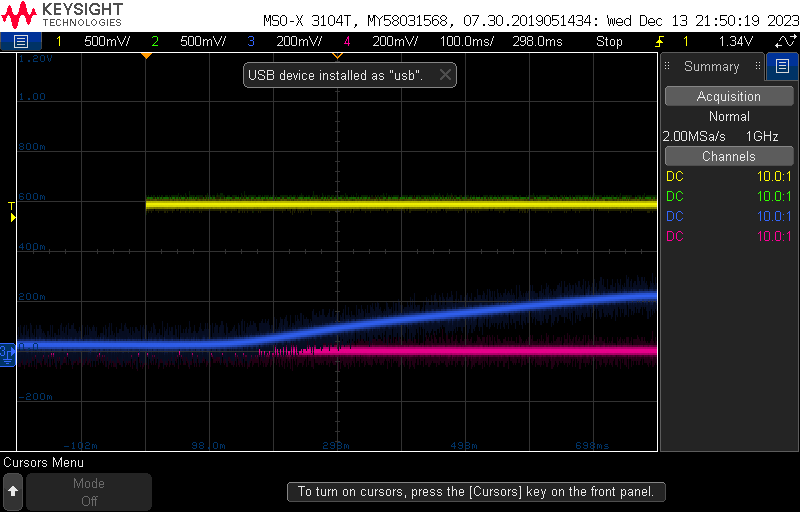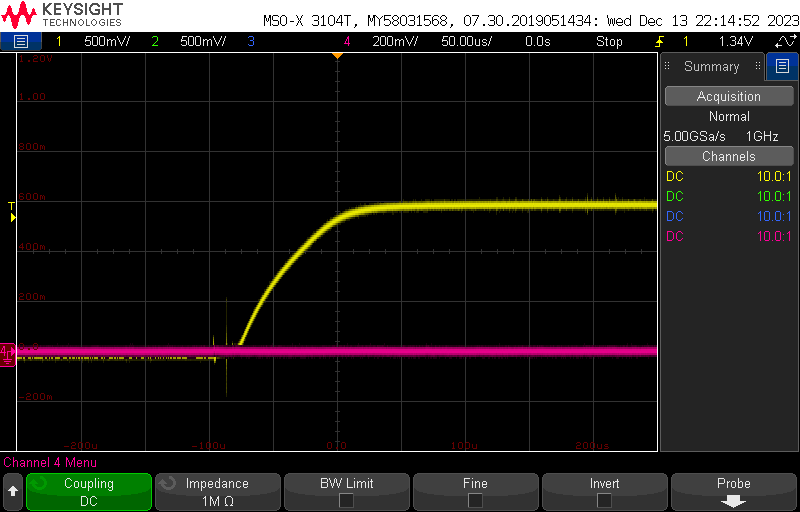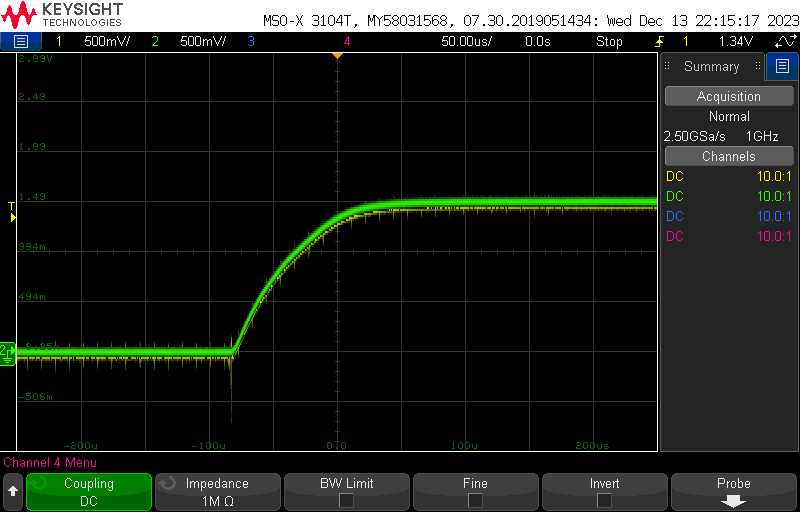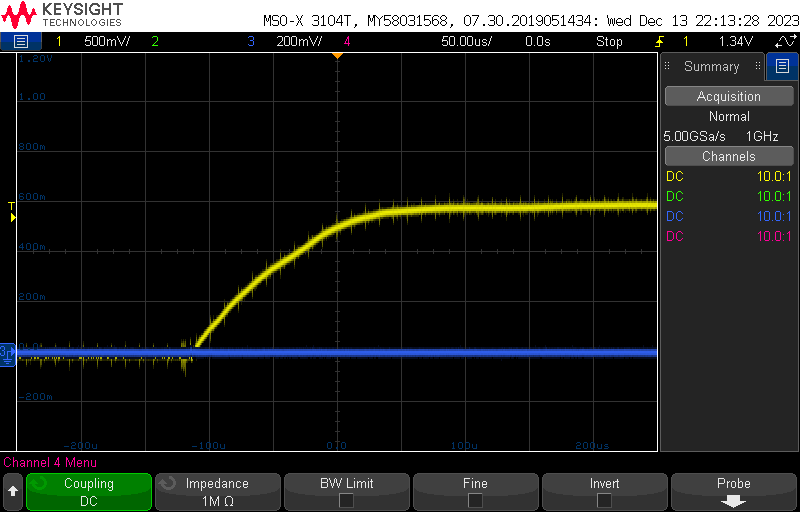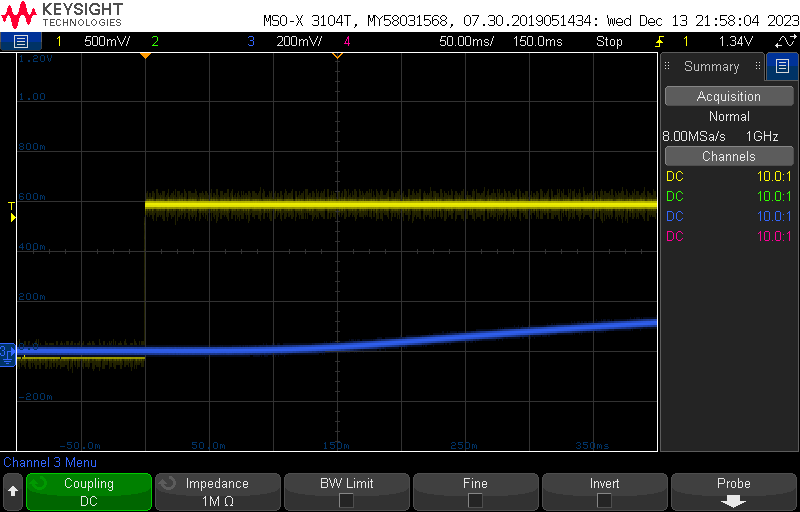Other Parts Discussed in Thread: TPS62243
I have a design which uses the TPS61021A to generate 3.6V from a AAA alkaline battery. The enable pin is pulled to ground through a 100k resistor and the design holds the regulator in shutdown mode until a button is pressed. I have found that upon initial application of power on a cold start I see an input current of about 40 uA at 1.5V and the output voltage floats around 0.25 V. If I enable the regulator then disable it the shutdown current drops to < 1 uA at 1.5V and the output voltage goes to 0.0 V. If I remove power and re-apply it the shutdown current remains at < 1 uA at 1.5V and the output voltage remains at 0.0 V. Per the datasheet I would expect to see the shutdown current at < 1 uA even at initial application of power.
I have probed the enable line with an oscilloscope and it remains below the EN high threshold during power-up. What is causing the high shutdown current on initial power-up? Does this device not enter shutdown mode after power application until the EN line is cycled high then low? The 3.6V rail generated by the TPS61021A powers a TPS62231 generating 1.8V and this regulator has its EN line tied to VIN. Could this 1.8V regulator be causing issues with the upstream regulator?


